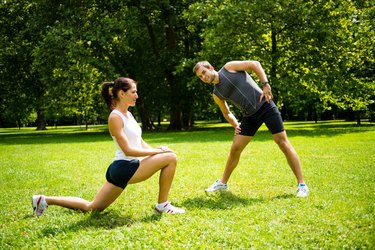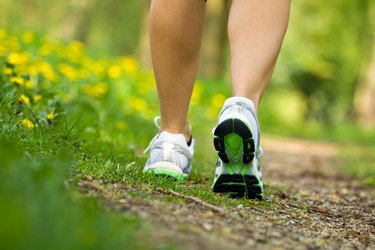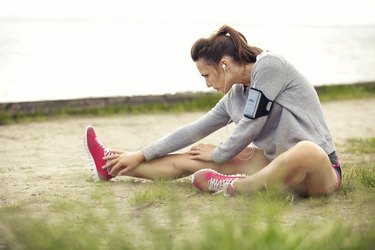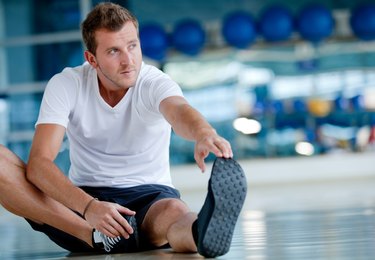
The phases of your exercise session should include warmup, conditioning and cooldown. Some people prefer to add stretching as a fourth phase, separating it from the warmup or cooldown phases. Each of the phases plays an important role in helping you reach your fitness goals while maintaining your health and safety. The phases that provide time to prepare your body and time for your body to recover are just as important as the exercise activity you choose for the main part of your session.
Warmup
Video of the Day

The warmup phase of exercise prepares your body for the activity of the conditioning part of your workout. Warming up before exercise allows your body to adjust gradually to the increased demand on your heart, muscles, breathing and circulation. Warmups also increase your body temperature slowly, improve flexibility and protect against injury and muscle soreness. Warmups involve light aerobic activities, such as walking slowly for five to 10 minutes or a moderate version of your conditioning exercise, and should be based on your physical characteristics and your conditioning activity. For strength training, warm up by moving your joints and muscles.
Video of the Day
Stretching

Stretching, or range-of-motion activities, can be performed as part of your warmup phase, just after your light cardio . Stretch all of your major muscle groups for five to 10 minutes. Stretch and relax the muscles slowly and gently without jerking or bouncing and hold each stretch to allow for tightening of the muscles and tendons.
Conditioning

During the conditioning phase, you perform the exercise that produces fitness benefits, such as calorie burning, building endurance or muscle strengthening. You may choose an aerobic exercise, such as swimming or the elliptical jogger, or you may lift free weights, perform circuit training on weight machines or play a high-intensity sport such as soccer or basketball.
Cooldown

The cooldown phase ends your exercise session with recovery time for your body. Cooling down requires you to keep moving after you end the conditioning phase. Cooldown movements should allow your heart rate, blood pressure and body temperature to return slowly to normal. A gradual decrease in physical activity, such as slow walking, is a good way to cool down. You can also perform a few stretching movements to cool down.